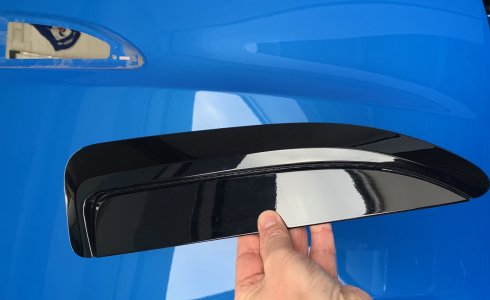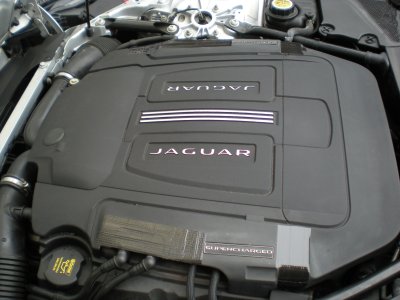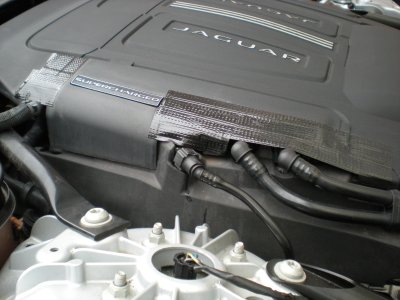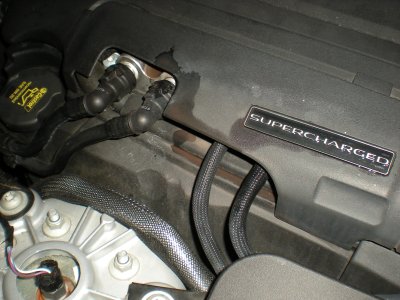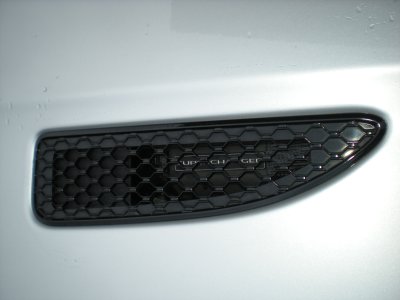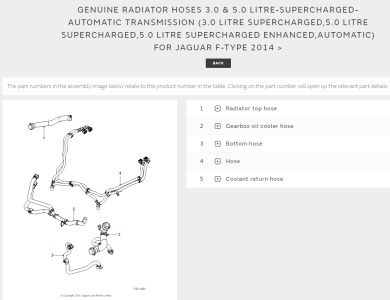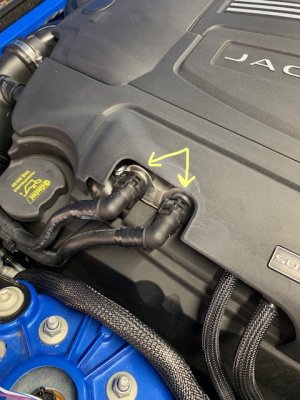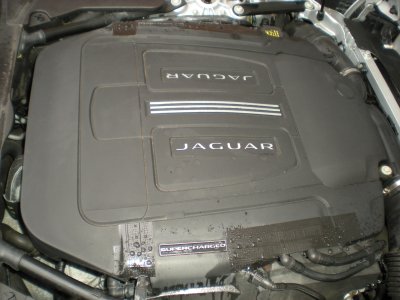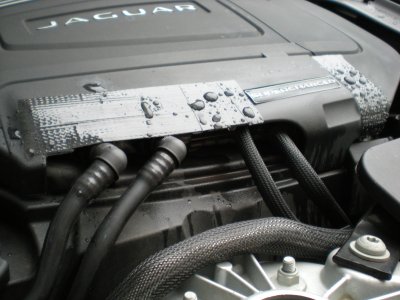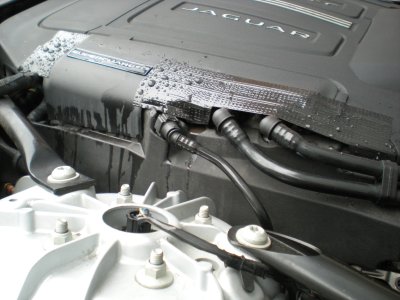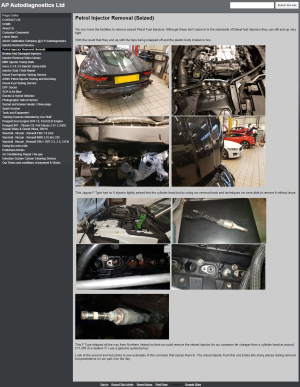There have been numerous V6 owners who’ve reported that water ingress through the bonnet vents has been the cause for corroded/seized-in and failed fuel injectors etc.
The water ingress shouldn’t affect the vehicle as it's supposed to run off the engine's plastic covers and drain away, but some of it is reaching these areas.
It's normal for water to enter through the 'open mesh' bonnet vents on my car i.e when it's raining or when I wash it. Also, the car isn’t garaged.
Although I’ve had no issues with the fuel injectors, I decided to look into this matter further in case my car develops the same fault? As they say......'prevention is better than cure.'
On the attached photos of my engine cover, you can see the lighter colour around the areas where the ‘supercharged’ badges are on both sides of the cover. These are directly beneath the bonnet vents and water that passes through them appears to be dripping down through the cut-outs in the engine top cover (arrowed) and eventually onto the fuel injectors etc?
From reading some other reviews, it appears that fuel injector numbers 4 & 5 are those which often fail and this corresponds (approx) with the areas numbered 4 & 5 on the photo of the engine cover.
To help prevent this problem, I’ve temporarily applied black (50mm width) duck tape over the affected areas of the engine cover (this doesn't hinder the removal and replacement of the cover) as I didn’t want to seal off the bonnet vents which should be kept open for cooling and ventilation of the engine bay. As the duck tape now covers the cut-outs in the engine top cover, any water that passes through the bonnet vents is much more likely to bypass the gaps between the engine top and side plastic covers then drain off, instead of finding its way onto the fuel injectors etc.
At first, I was concerned about whether or not the duck tape could withstand the heat in the engine compartment but after quite a few journeys (which included some ‘spirited’ driving) and bringing the engine up to normal operating temperature, the tape is unaffected. The tape has a maximum operating temperature of 93°C which isn’t too far off what electrical insulation tape is. Insulation tape has already been applied by the manufacturer in various locations in the engine compartment including the top of the engine (underneath the plastic cover).
Even so, as a precautionary measure I’ve ordered some black aluminium foil adhesive tape (50mm width) which has a max operating temperature of 150°C and is flame retardant & self-extinguishing. One this arrives, I’ll be removing the duck tape and applying it instead.
Hope this is helpful to anyone who has the bonnet vents water ingress issues with their car.
